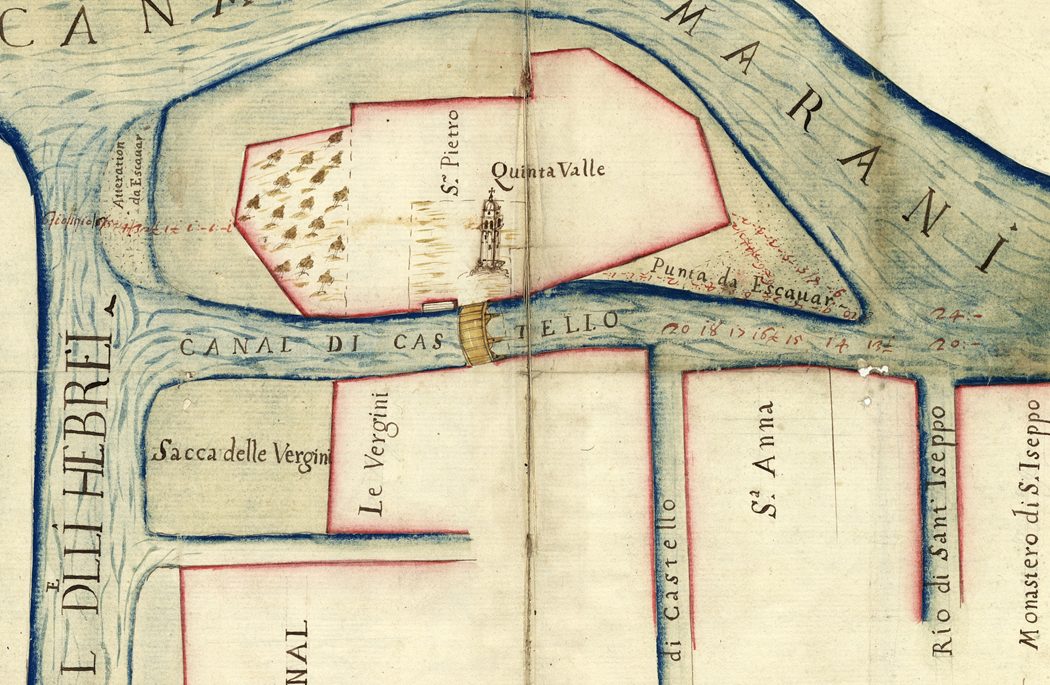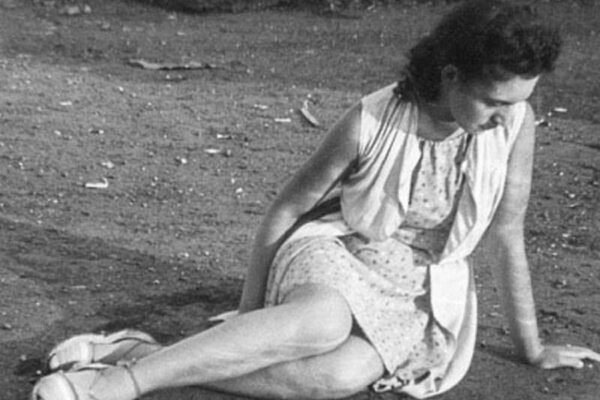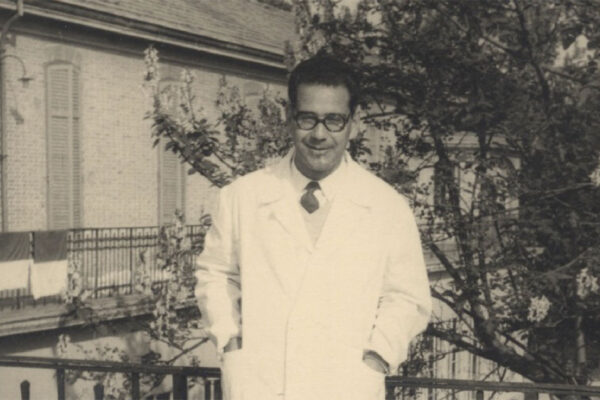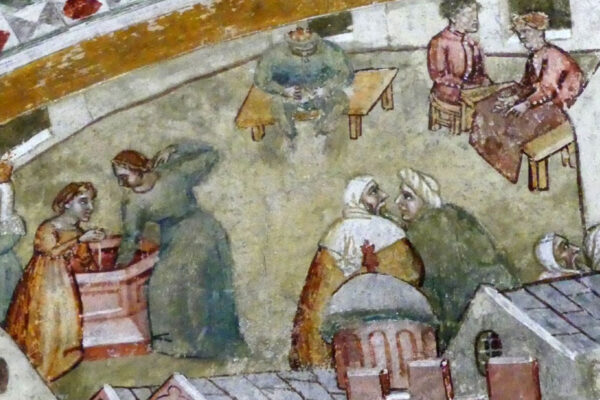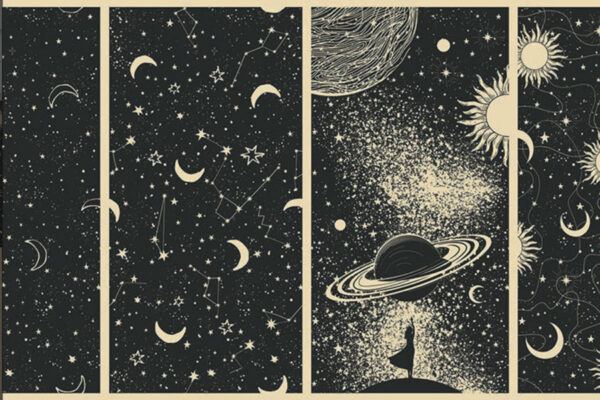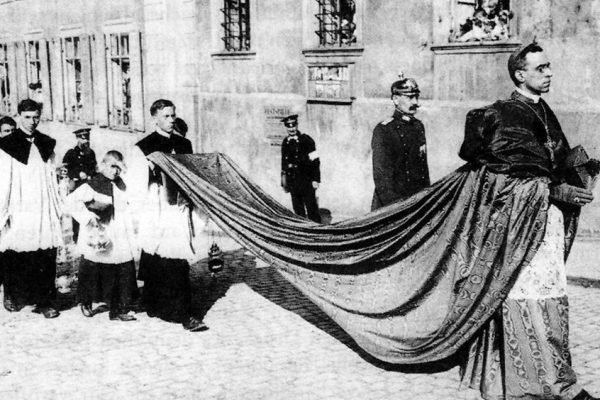A Jewish Ghetto Worth Saving. The ghetto that trapped Venice’s Jews is getting a renovation after 500 years
Something like Venice no one can do. Only God. The greatest achievement for mankind and the one that approaches it most to God, since it cannot create such wonders, is to preserve those that exist.
—French philosopher Simone Weil (Venise Sauvée 1955)
On Nov. 20, the Venetian Heritage Council, an international philanthropy founded by the fashion designer Diane Von Furstenberg, pledged $12 million to restore the Venice Jewish ghetto, to salvage its crumbling heritage and turn it into a rich Jewish cultural center in time for its 500th anniversary in 2016. The project will include the renovation of what’s now a small, disorganized museum, which is no testament to the rich Jewish culture that has inhabited the Venetian island for half a century, and the restoration to glory of the ghetto’s five synagogues, once bustling with life.
The rehabilitation of the Venice ghetto is long overdue. In 1516 the Serenissima Repubblica confined its Jews to the first ghetto in the world. Gated into a small, polluted island on the periphery of the city, the community was locked up at midnight by Christian guards whom they had to pay upon entering the ghetto; they were discharged at dawn. But while the ghetto was created as an act of segregation, over time it became a refuge in which Jewish culture and identity thrived. Both imprisoned and united by the canals of Venice, Jews found—despite the intentions of the government—a space in which to wholly express themselves, forging a community that would go on to influence the city, and Europe as a whole.
“All of us are responsible for making sure that future generations—500 years from today—have access to these stories of human culture and progress,” Von Furstenberg said in the VHC’s November announcement of the restorations.
While all of Venice is fragile, due to its eternal battle with flooding and 1,600-year-old foundations, the ghetto is particularly unstable, given the unusual architecture that resulted from overcrowding. “Sometimes you start taking apart a wall and you discover it was being held up by magic,” said Toto Bergamo Rossi, director of the VHC’s Venice office, with a laugh. “The tendency of the human is to force the ego, to try to impose ourselves, but why? My concept of restoration is the opposite: Respect as much as we can, try to be a step behind. We shouldn’t be in competition with history.”
While the restorations will be subtle and respectful, one of the key aims of the project is to revitalize rather than simply preserve. “I didn’t choose this project because it is Jewish,” Rossi said. “The ghetto is a crucial part of Venice’s cultural heritage, and if we want to make a better Venice, we have to raise the level of culture.” Rossi describes the project as part of a broader shift that needs to occur in Venice, focusing on its extraordinary historical heritage, rather than cruise-ship tourism and ubiquitous hawkers selling cheap goods along the romantic city’s winding streets.
“Right now, Venice is about bringing more and more people, for shorter times, for things that have nothing to do with the beauty and real dimension of Venice. We are killing the city,” said Shaul Bassi, director of the Venice Center for International Jewish Studies. “The ghetto is a place of hidden beauty; it’s a place that needs a narrative, the stories of survival, the stories of accomplishment, despite the ghettoization. The synagogues are beautiful inside, but outside they are just inconspicuous Venetian palazzos. We really needed a major intervention to turn the museum into a place capable of telling the story.”
It’s a noble goal, and those who have arrived in Venice only to be put off by its foul smell and impassable alleys clogged with tourists will recognize the impulse. But there are very few Jews left in Venice, and almost none in the old ghetto. The renovation may help breathe new life into Venice, but some citizens are concerned that it won’t be the breath of authentic Jewish culture.
There is evidence of Jews being excluded from public life in Venice as early as the 10th century: forbidden from boarding ships, made to settle on the outskirts of the city, and forced to pay special taxes. Due to the economic devastation of multiple wars and the Black Death, however, they were welcomed as moneylenders in the 14th century. But by the end of the 15th century, money-lending Jews were again banned. Those left were forced to wear yellow badges, and later hats, as religious identifiers. Prohibited from owning land and building synagogues, some were even forcibly baptized. By 1492, many Spanish and Portuguese Jews, having been expelled during the Inquisition, settled in Venice, and by 1516, there was heavy debate about whether to allow them to remain in the city.
On March 29 of that year, new laws forced all Jews to live together “in order to prevent their roaming about at night.” Formed on the site of a foundry (in Venetian Italian, geto) the Ghetto Nuovo was established, keeping Jews away from civil life and the centers of religious and political power. It was the first case of officially organized segregation based on religion in Europe. Allowed to practice only certain professions, Jews became doctors, strazzarioli (ragsellers), merchants, and moneylenders, whose activities were considered so unseemly they had to be carried out in hidden ground-floor rooms. Given the minimal space in the ghetto, its inhabitants built upward, resulting in subdivisons, temporary additions, narrow walkways, and the tallest buildings in the city.
Originally, German Jews escaping persecution moved to the ghetto, building the Ashkenazi synagogue, the Scuola Grande Tedesca, in 1528. When wandering Jews arrived from Levantine ports in 1541, the Ghetto Vecchio was established, separating them from the original settlers. (Despite the names, the Ghetto Vecchio, or “old ghetto,” is in fact newer than the Ghetto Nuovo, or “new ghetto.”) Coming from different parts of Europe, each group wanted to preserve its rituals and sense of community so that by 1571, there were five synagogues, each catering to diverse groups of Jews who had made the ghetto their home.
“Jewish Venice represented the sum of many communities: German, Portuguese, Spanish, and Levantine,” writes Riccardo Calimani in The Ghetto of Venice. “Each of these groups preserved its own religious traditions; they lived separately, enjoyed different privileges, and had distinct economic functions. They were often in conflict. … With the passing of time the differences waned but, owing partly to the strong, innate Jewish tendency toward individualism, they never disappeared entirely.”
Despite the many restrictions, the community fostered a complex cultural and intellectual life: providing advice to Henry VIII during his divorce; producing works by scholars like Leon Modena, Sara Copio Sullam, and Simone Luzzatto; and, up to 1650, printing one third of all Hebrew publications in Europe. Christians would visit the ghetto to buy spices, jewelry, and fabrics and to visit banks and doctors. By the 17th century, Jews controlled much of Venice’s foreign trade, and commerce and scholarship flourished.
In 1797, with the fall of the Republic of Venice, Jews were emancipated. “From the Napoleonic opening up of the Ghetto until Mussolini’s Race Laws of 1938, the Jews live what retrospectively will seem an illusory parenthesis of freedom,” write Bassi and his colleague Isabella di Lenardo in The Ghetto Inside Out. During this time, many Jews left or assimilated, and the ghetto became just another Venetian suburb.
By the early 20th century, mere shadows of Jewish life remained. “One hears nothing but poor everyday sounds,” wrote poet Rainer Maria Rilke of visiting the dwindling community. By WWII, only 1,200 Jews remained in Venice. In the final years of the war, 247 of them were rounded up and deported to Auschwitz-Birkenau. Eight returned.
Today, some 500 Jews remain in the ghetto, but, like other Venetians, many are moving away from the city, which is increasingly expensive and uninhabitable. The sinking islands’ population makes up less than half of the people there each day—most of them tourists. But Jews also have their own entropy, flinging their community apart.
“The Jewish community of Venice is losing people because of this outflow of young people looking for better opportunities,” resident Susanna Calimani told me, “but also because Jewish young people … feel far from the Jewish community as it is, since they might have made a mixed marriage and feel that the community is too Orthodox. I think this is also caused by a phenomenon of strong polarization of Judaism that took place in last years—religious people became more religious and lay ones moved in the opposite direction … losing, in my opinion, one of the most wonderful peculiarities of Italian Judaism, the Italian middle way: traditionalism.”
And those Jews who still feel connected to their tradition have, like other Venetians, sometimes felt overwhelmed by tourists, making them more likely to keep their cultural or religious practice out of public eye, behind closed doors. This tendency has created some tension with the Chabad community, which arrived in the ghetto some 20 years ago, and which welcomes tourists and conducts religious ceremonies openly in the central campo. Calimani says she feels one of the greatest challenges facing Venetian Jewry is the rift between the two groups.
It is ironic, said Bassi, that many visitors take Chabad to be “real Venetian Jews” because they look more “authentic” in their traditional appearance. “I used to be very angry and resentful of Chabad,” Bassi said, “and then I said, look, the history of Venice is of people coming from different places in different ways, and probably each new group was welcomed with suspicion and resentment. … So if I say, ‘Chabad has no place here,’ I would be applying the same logic as 500 years ago.”
The ghetto’s history is one of groups clashing in trying to preserve their identities, eventually finding a way to coexist. Likewise, explains Bassi, the Venetian community is at a crossroads and must be willing to communicate internationally in order to keep the complex heritage of the ghetto alive. As part of anniversary celebrations, the Venice Center for International Jewish Studies plans to launch a new program in 2015: Beit Venezia: A Home for Jewish Culture, which will provide educational and artistic activities in a multimedia space. A revival of Jewish life in Italy is critical right now, with the biggest exodus to Israel in some 40 years and a spike in anti-Semitic incidents across Europe. Italo-Israeli demographer Sergio Della Pergola says those emigrating are “motivated by the economic crisis in Italy as well as ‘endemic’ prejudice and anti-Semitism in the media, on the Internet, and vast sectors of parliament.”
When I emailed Von Furstenberg to ask for her thoughts on the restoration, she replied humbly, if somewhat curtly. “I am in no way leading this preservation of the ghetto of Venice,” she wrote. Referring to Rossi, she continued: “I met with Toto on my last trip to Venice, and I was moved by his passion.” Clearly, the high-profile fashion designer has a lot of emails to respond to, but she does take the time to point out that it’s “a wonderful project, since the Ghetto is apparently the oldest in the world.”
Locals have expressed their fear that such detachment might lead to a physical restoration of the ghetto’s beauty, forgetting, however, about the needs of the locals and their fledgling community. Calimani told me she is “afraid that all the money… will indeed help the buildings, synagogues, and Jewish cultural heritage, but not so much the individuals.”
As the sun set at the end of Yom Kippur this fall and Venice’s infamous pigeons were shooed from the windows of the Canton Synagogue, I watched parents shroud their children in tallitot, blessing them for the year to come. From the women’s gallery, I saw most people disappear beneath white cloth, the descendants of a 500-year-old community huddled intimately together. A few however, stood bare and alone; prophets of the possibility of losing the richness, heritage, and traditions of yet another Jewish Diaspora community.


